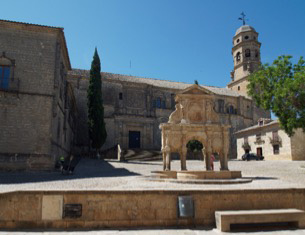
Baeza
Baeza, a UNESCO World Heritage city, is known worldwide thanks to its splendid Renaissance monumental complex and the network of alleys in the Old Town.
This setting gives Baeza a special charm that dazzled many historical figures, and makes it one of the most beautiful cities in Andalusia.
The city is greatly influenced by famous authors such as Antonio Machado and Federico García Lorca, who had a momentous meeting here.
Without forgetting the important presence of San Juan de la Cruz in Baeza and the family ties that link Jorge Manrique to this town
Baeza is part of the La Loma y Las Villas region, of which it occupies its extreme southwest, serving as the center of influence for this part of the territory.
Among its rich architectural heritage, the Cathedral (16th century), the work of Andrés de Vandelvira, the Church of Santa Cruz (13th century), in late Romanesque style, the Convent of San Francisco, the Town Hall, the Church of San Andrés, stand out. all from the 16th century, to which other resources such as museums and interpretation centers should be added.
In short, the historic center of Baeza constitutes one of the most important monumental sets of the Renaissance worldwide and knowing it through these distinguished authors will be an experience that you will not be able to forget.
Baeza City Council Tourism Portal
http://turismo.baeza.net/baezaturismo.es/PortalBaeza/turismo/menuprincipal.html

Place of Santa María and Cathedral
Este complejo monumental no eran solo lugares por donde Machado paseaba por Baeza, sino a los que les dedicó algunos escritos, al igual que el joven Lorca, para los que estos espacios son elementos principales en la Ciudad Perdida.. Vínculo con Antonio Machado Vínculo con Federico García Lorca

Jaén´s landscape
The encounter with the landscape of Jaén and its people surprised the young Lorca, accustomed to the flat fertility of the gardens and plains of Granada. Undoubtedly, this landscape clearly influenced him during his long peri-urban walks along the Cerro del Alcázar, on the remains of the old wall. A place that Machado also frequented assiduously. The display offered by the skyline of “blue mountains, in which the towns shine their diamond whiteness of faded light”, in clear reference to the Aznaitín and Mágina massifs, will leave a mark on his work, as explained below: LOST CITY (BAEZA) I Baeza…
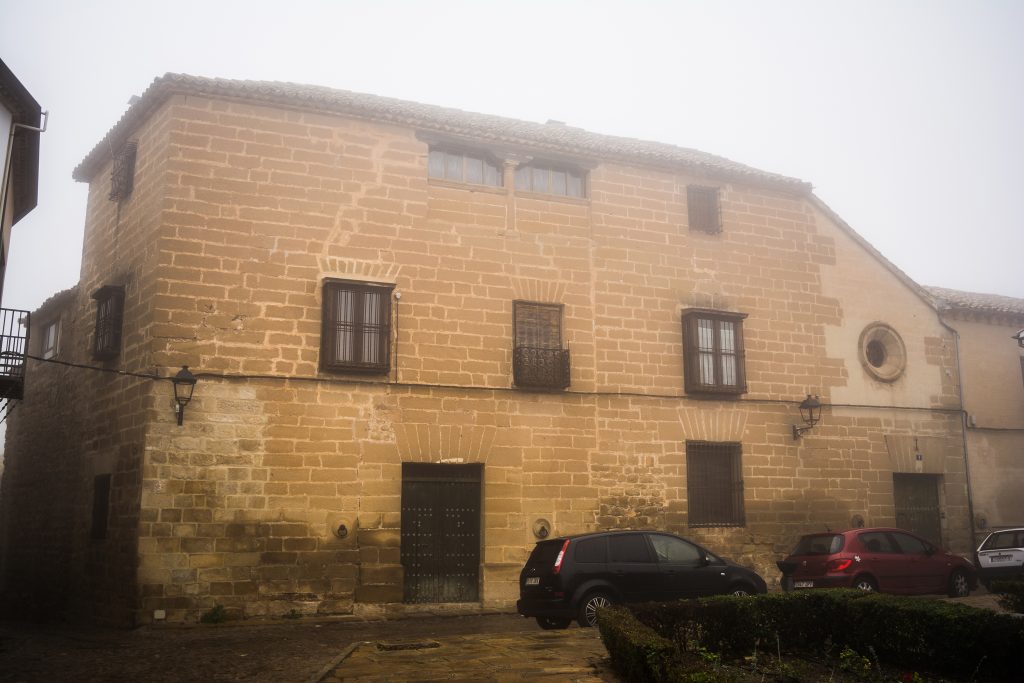
Vicar’s House
Saint John of the Cross resided in the so-called house of the Vicar throughout his stay in Baeza, until 1582. This house, which is still preserved, was the first house in which the Carmelites lived when they arrived in the city, to immediately move to the houses of Juan de Escos, in La Calancha, and later in the new convent (Convento de Nuestra Señora del Carmen). It has a backyard closed by the city wall.
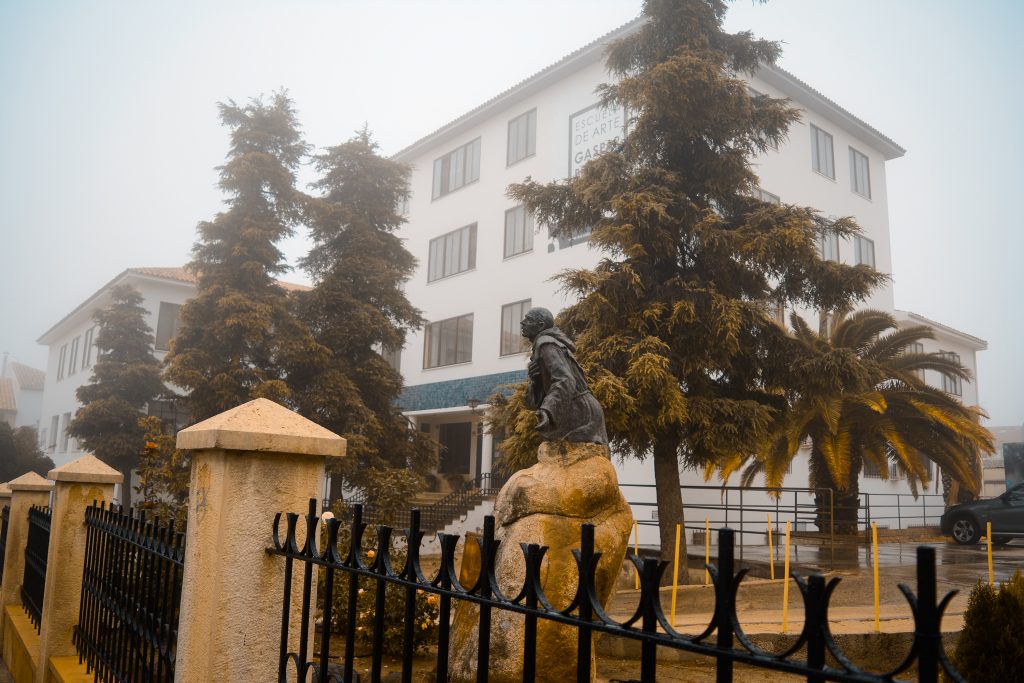
Convent-College of Carmen-San Basilio
As you can see, the name of the Convent-College can be misleading: del Carmen or San Basilio? The reason is because, although the convent was called Nuestra Señora del Carmen, the popular name could be San Basilio because he is the patron of the College: “Note that this school from the day it was founded was given as Patron Saint Basilio and has Nuestra Señora del Carmen as title, and yet many call it San Basilio for not distinguishing between Patron and Title” “Estudios Joselinos” 46, 1992, pp. 15-25, taken from GABRIEL BELTRÁN O.C.D . Testament of Fray Gregorio de…

Plaza del Pópulo / Plaza de los Leones( The Lions Square)
As with the Plaza de Santa María, Federico García Lorca describes the Plaza del Pópulo or de los Leones in an admired and somber way, lamenting the abandonment in which it is found. LOST CITY (BAEZA) I Baeza (…) In a serene square, which has an elegant but mutilated and shattered little palace, a graceful altar with rag flowers next to the aristocratic seriousness of a triumphal arch with a warrior’s air, and a fountain with lions blurred in the stone ( …) The Plaza del Populo was one of the most important squares in Baeza, which housed the main…
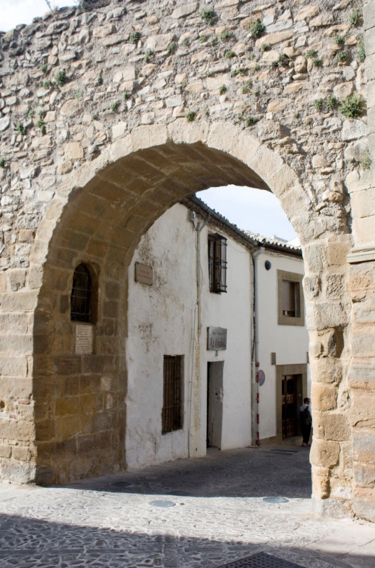
The Arch of Barbudo
While you enjoy in wandering through the marvelous Old Town of Baeza, stop by the Arch of Barbudo. This stone arch is what remains of one of the main access gates to the city. Its real name is Arco de San León, in honor of the Franciscan convent and former hermitage and later changed its name for the Arch of Barbudo(“Puerta del Barbudo”). The reason is given by the Portuguese Martín Yánez de la Barbuda, Master of the Order of Alcántara, who in 1394 passed through it with a large army to fight against the Muslims from Granada, being defeated…

Walk of the walls
Progressively, Antonio Machado got used to the rural environment of Baeza and its dazzling landscape outside the city. He enjoyed peri-urban walks that took him to the Cerro del Alcázar and over the remains of the old wall. One of the spaces most frequented by Antonio Machado, who walked it again and again in his meditation exercises. At one point along the walk, a plaque and a monument to Antonio Machado with a bust of Pablo Serrano remind us of the poet today. This sculpture was made to pay homage to the poet in 1966, although it did not arrive…
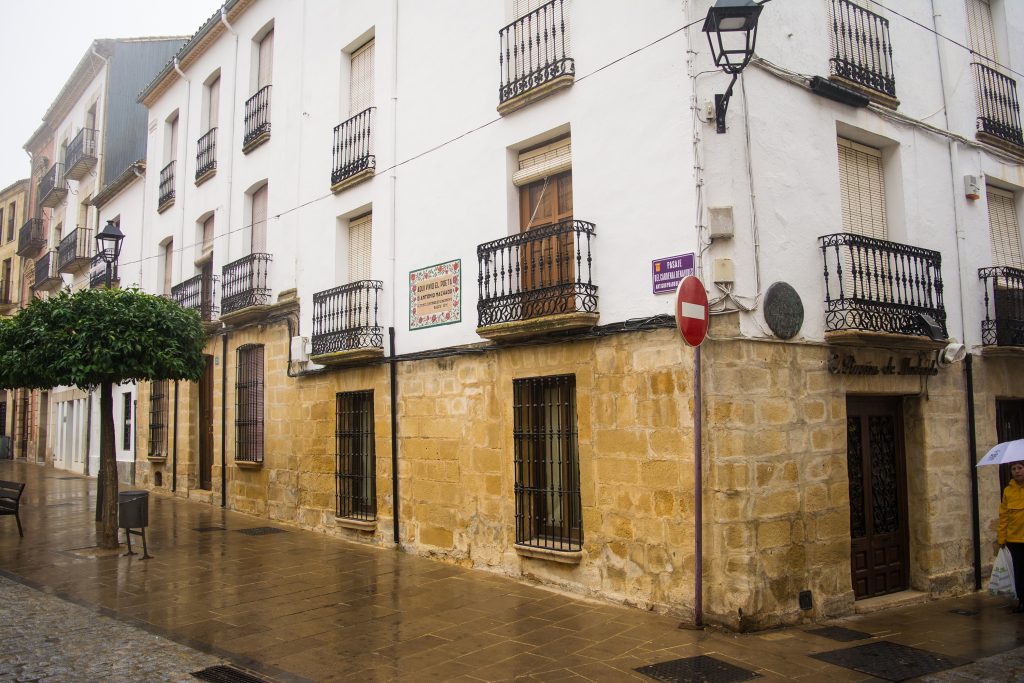
Residence in Gaspar Becerra street
The professor’s salary did not allow Antonio Machado many expenses, so he soon had to leave the Hotel Comercio and look for rental accommodation. First, he rented a house to reside with his mother on Prado de la Cárcel Street (today Pasaje del Cardenal Benavides), but he found it ramshackle and cold, so he moved to another, although more modest, as he found it more comfortable and bright. An adjoining house on the same street, which was on the corner of Calle Gaspar Becerra, from where Machado could see the Plateresque façade of the old jail, today Baeza City Hall.…
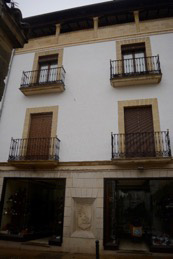
Rebotica by Don Adolfo Almazán
Machado used to attend the gatherings that were held in the afternoons in the back room of Don Adolfo Almazán, gymnastics teacher at the institute and mayor of the city in 1914. The original building of the Almazán pharmacy was located on Calle de San Francisco, in front of the old Franciscan convent. The pharmacy was in operation until the seventies of the 20th century. Later the building where it was located was closed and then demolished. In these meetings, although the poet used to keep quiet and listen to others, they talked about politics, the country and the weather.…
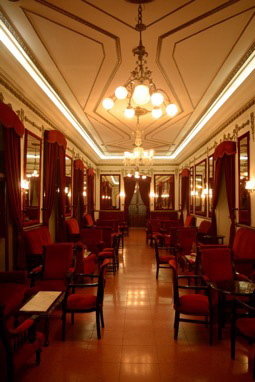
New Casino
The Casino de Señores, or New Casino, was an important meeting point for Machado. The casino is still located in the same historic building on Calle de San Pablo. In his hall of mirrors, the poet sometimes prolonged his gatherings and upon request, you can see the document where the poet appears as the first passing member of the casino. A beautiful seated sculpture of the poet has been placed next to the facade of the building, made by the sculptor Antonio Pérez Almahano in 2009.
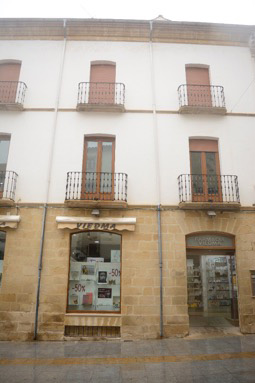
Late Hotel Comercio
During the first two years of his stay in Baeza, Antonio Machado lived alone, still without his mother, Mrs. Ana Ruiz, in the now vanished Hotel Comercio, the only inn in the entire city, located on Calle San Pablo. Today the hotel is converted into flats and only its facade is preserved. Until its transformation, the room was preserved as it was occupied by the poet, number 15 on the first floor, whose balcony overlooked the front of the Palacio de los Salcedo and had a view to the mountains of Magina to the west.




